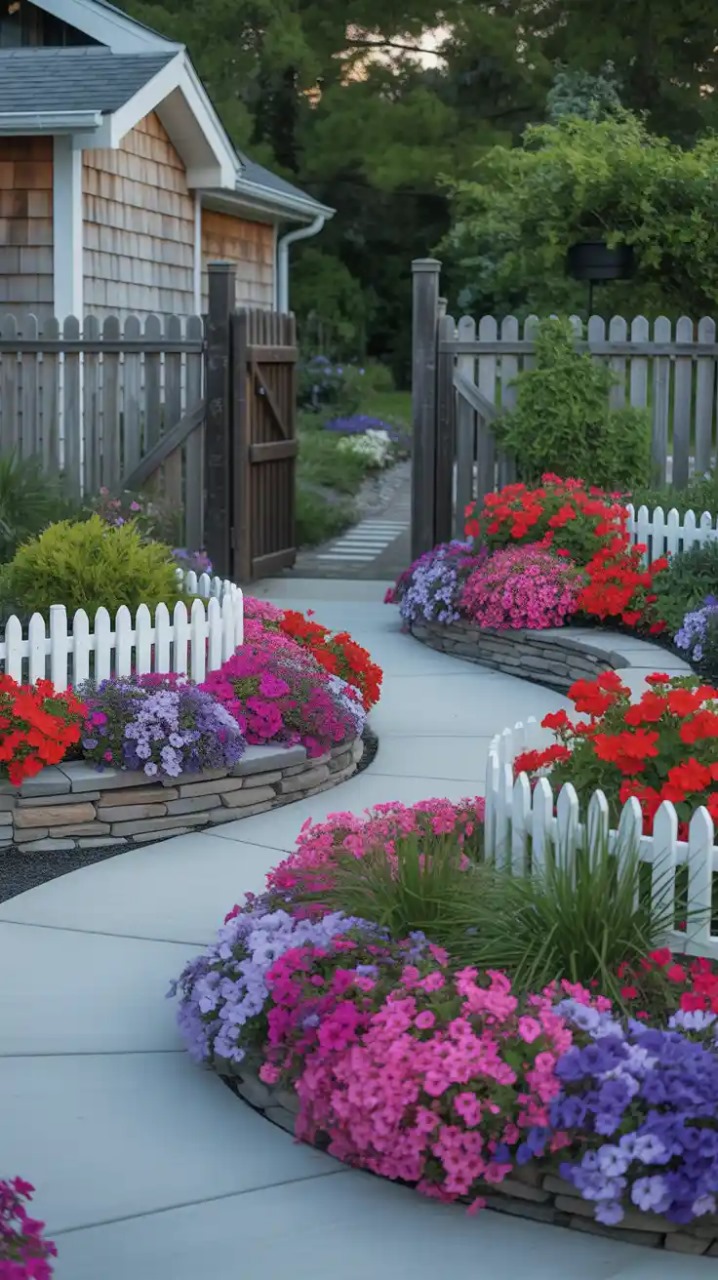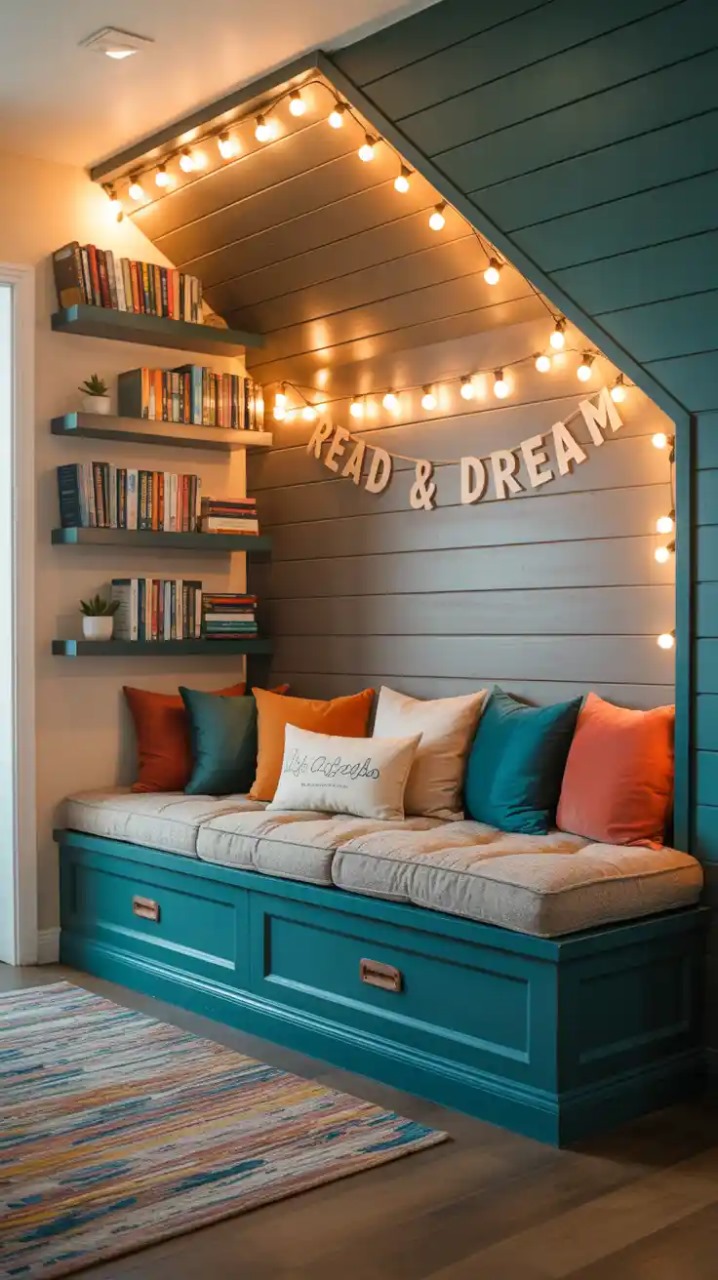15 Cheap Garden Edging Ideas DIY: Budget-Friendly Ways to Transform Your Garden
A beautiful garden is more than just flowers, plants, and greenery—it’s about structure, flow, and the little design details that tie everything together. One of the most overlooked yet powerful ways to elevate your outdoor space is through garden edging. Whether you have a small backyard, a vegetable patch, or a large landscape, DIY garden edging adds definition, prevents grass from creeping into your flower beds, and gives your yard a finished, professional look.
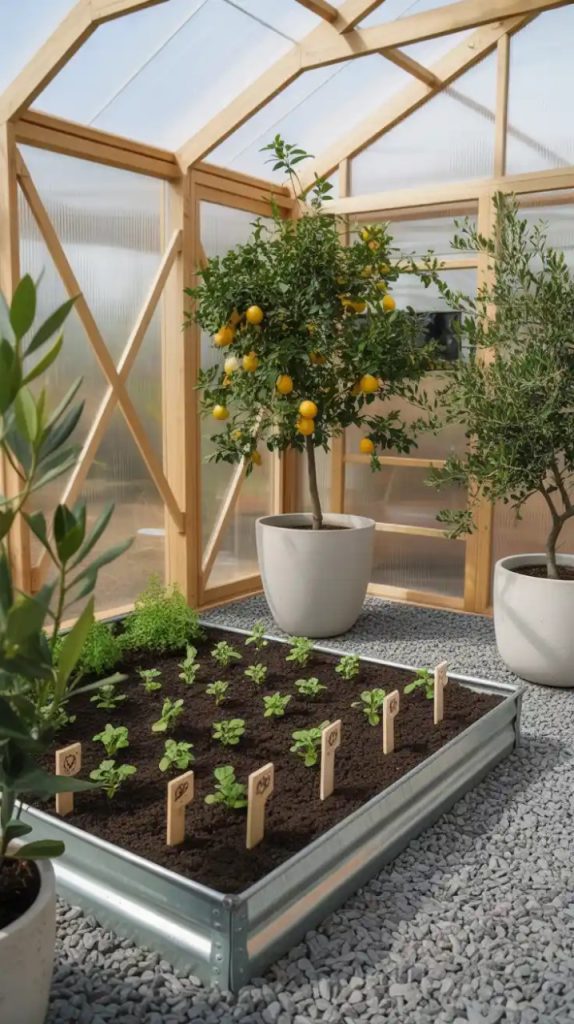
The best part? Garden edging doesn’t have to be expensive. With creativity and some resourcefulness, you can achieve stunning results on a budget. In this guide, we’ll explore 15 cheap DIY garden edging ideas—from rustic wood to modern metal strips—along with practical tips to help you choose the right style for your space.
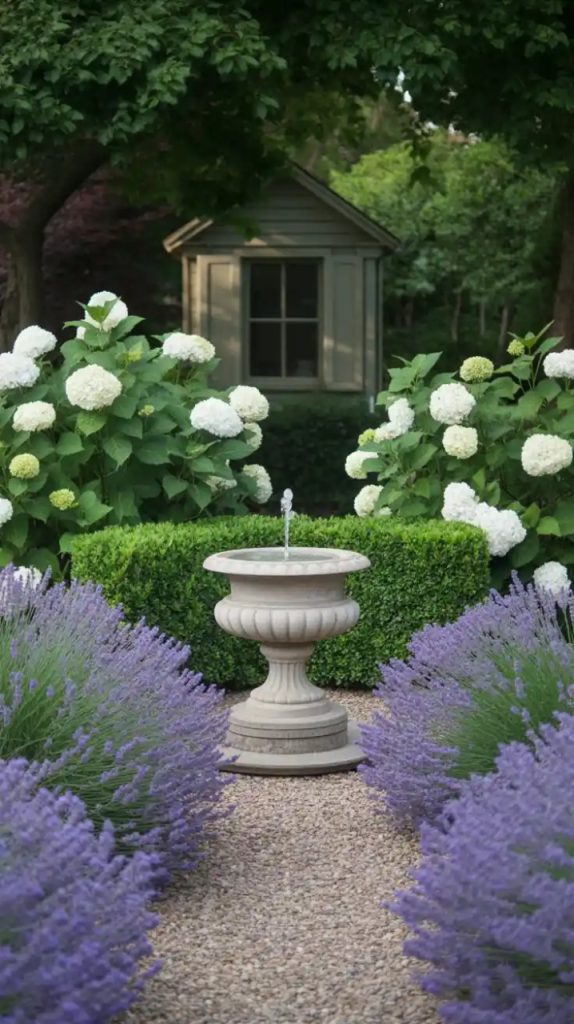
By the end, you’ll have plenty of inspiration to create a garden that looks polished without draining your wallet.
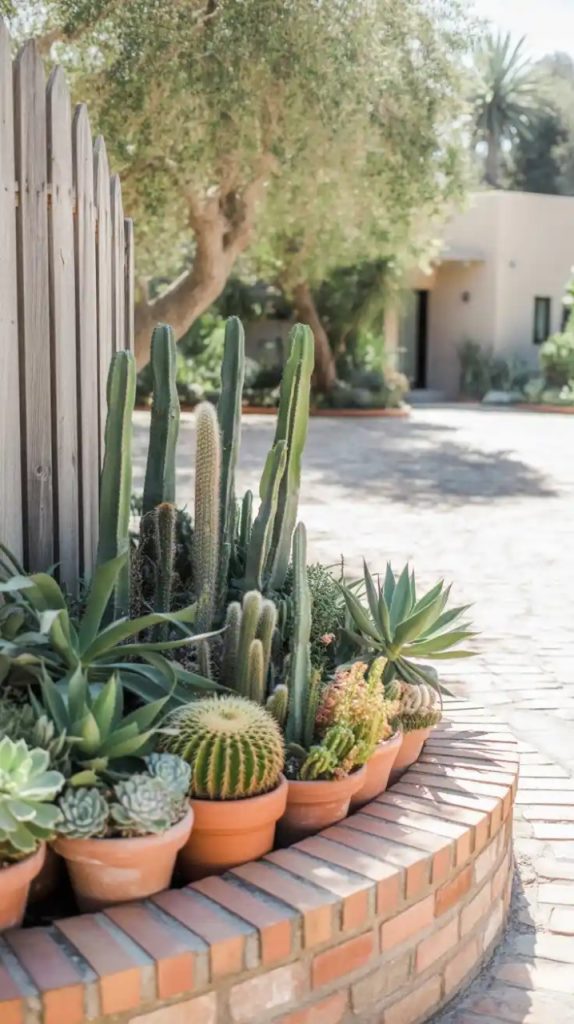
Why Garden Edging Matters
Before diving into the ideas, let’s understand why edging is such a game-changer:
- Defines garden spaces – Clearly separates flower beds, lawns, pathways, and patios.
- Prevents overgrowth – Stops grass and weeds from creeping into your beds.
- Reduces maintenance – Helps contain mulch, gravel, and soil where they belong.
- Adds visual appeal – Instantly gives a clean, professional, and organized look.
- Boosts property value – A well-kept landscape always impresses visitors and potential buyers.
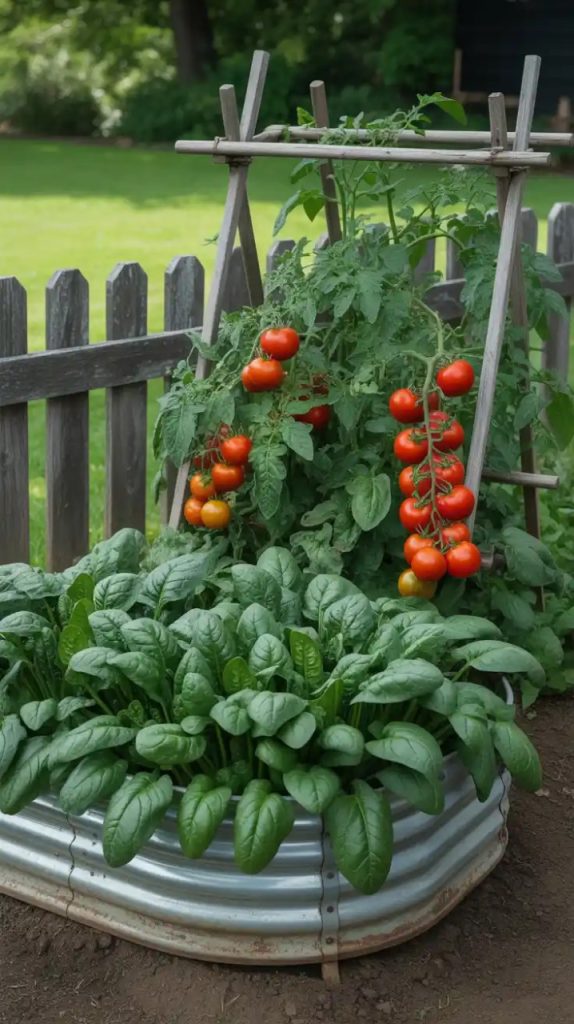
Now, let’s dive into the 15 best cheap DIY garden edging ideas that anyone can try.
1. Classic Brick Edging
Bricks are one of the most timeless and affordable edging materials. They are durable, weather-resistant, and easy to find—often available second-hand at a very low price.
Ways to use bricks:
- Lay them flat for a subtle, low-profile edge.
- Place them on their side vertically for more height.
- Angle them diagonally for a unique zig-zag look.

Pro tip: Reclaimed bricks from old construction projects are usually cheaper and give a rustic charm.
2. Wooden Log Borders
Logs or wooden slices create a natural and rustic edge that blends seamlessly into the garden.
How to DIY it:
- Cut logs into equal sizes (6–12 inches tall).
- Stand them upright side by side along the border.
- For a sturdier edge, partially bury them in the ground.
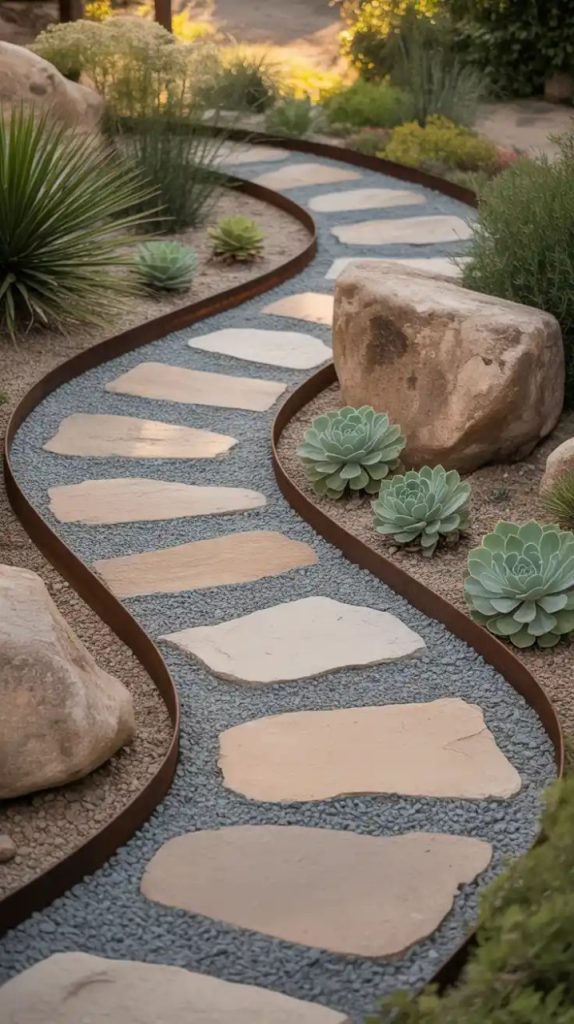
Best for: Cottage-style gardens, woodland gardens, or homes surrounded by nature.
3. Stone Garden Edging
Stone edging offers durability, character, and elegance. Even better—you can often collect stones for free from nearby fields or riverbeds.
Ideas for styling:
- Line them in a neat row for a structured look.
- Stack them for a raised wall effect.
- Mix different shapes for a more organic style.
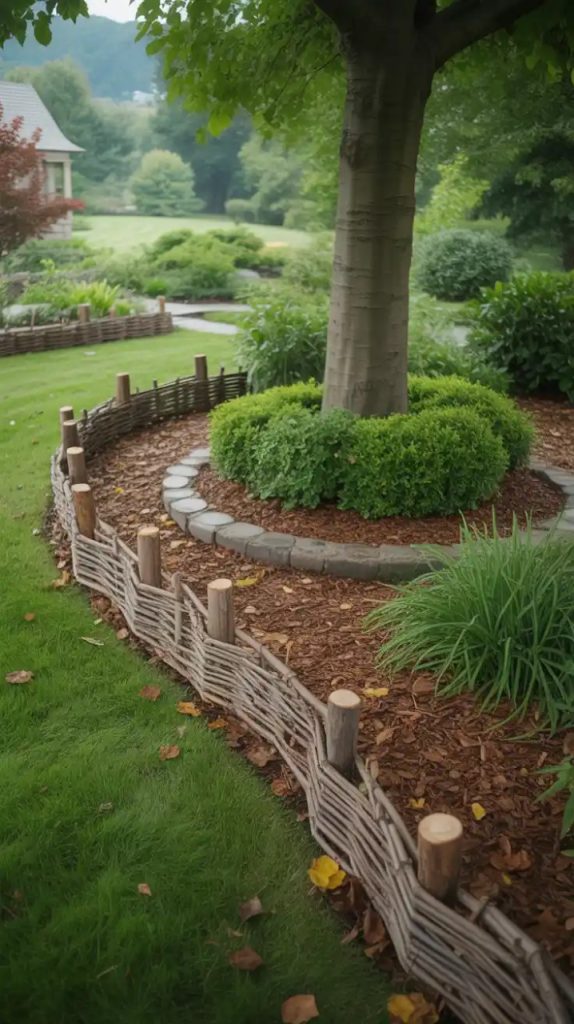
Cost tip: Landscaping companies sometimes give away leftover stones at discounted rates.
4. Pallet Wood Strips
Old pallets are a DIYer’s dream. By cutting the wood into strips, you can create rustic wooden garden borders at almost no cost.
Steps:
- Break apart a pallet using a hammer or pry bar.
- Sand the pieces to remove rough edges.
- Paint, stain, or leave natural depending on your garden style.
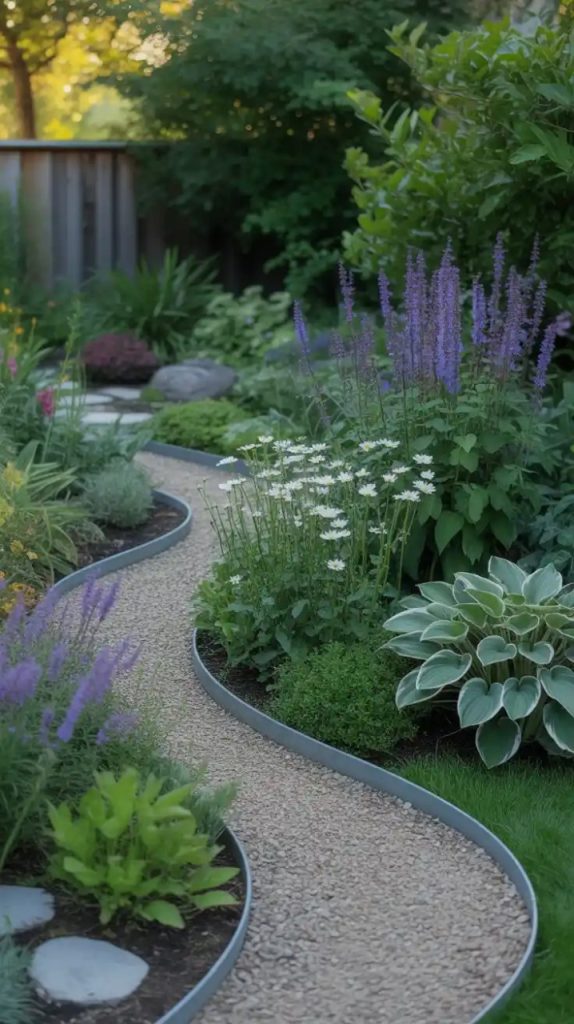
Eco-friendly bonus: You’re recycling wood that would otherwise go to waste.
5. Plastic Garden Edging Rolls
Plastic edging is one of the cheapest and easiest options to install. Available in rolls, it bends easily, making it great for curved garden designs.
Why it works:
- Quick installation.
- Lightweight and flexible.
- Low maintenance.
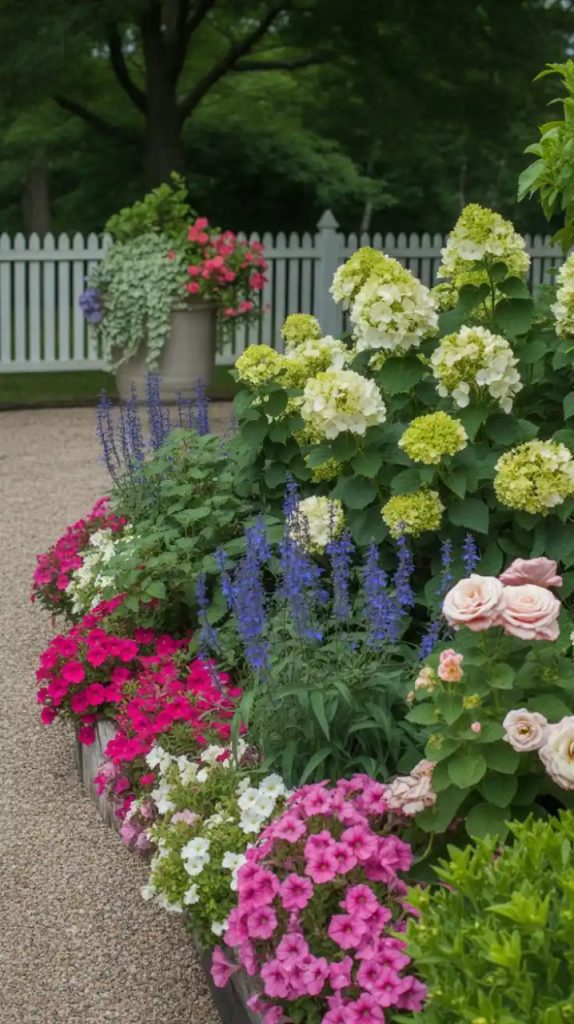
Downside: It doesn’t have the natural look of stone or wood, but you can hide it with plants.
6. Gravel or Pebble Trenches
Instead of a solid edge, you can create a decorative trench filled with gravel or pebbles.
Benefits:
- Helps with drainage.
- Affordable—pebbles are often sold in bulk.
- Adds a modern and clean aesthetic.
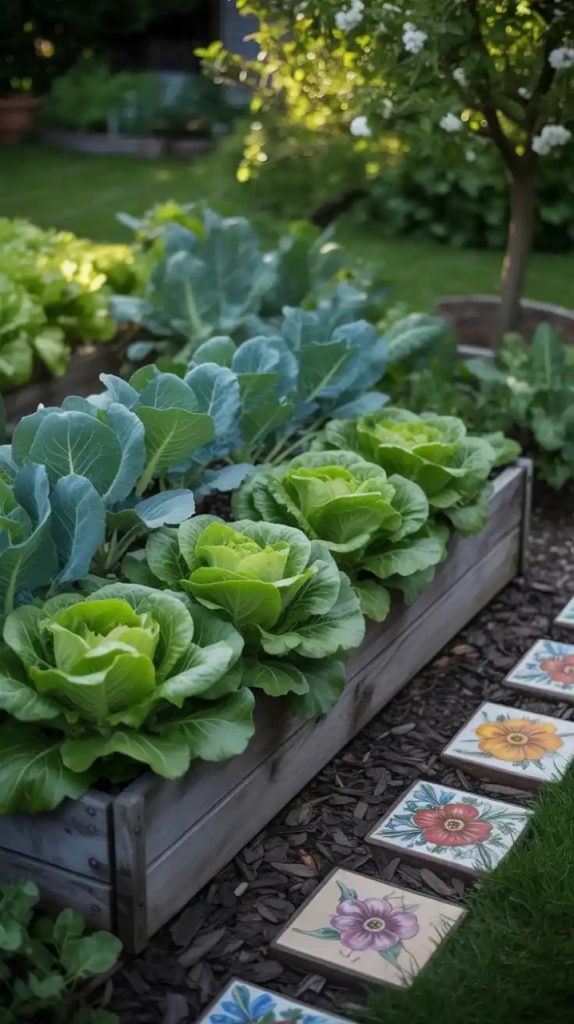
This option works beautifully around patios, walkways, or vegetable beds. Upgrade your cooking area with modern L-shaped kitchen designs with islands.
7. Terracotta Pot Fragments
Don’t throw away broken terracotta pots! Their curved shape makes them perfect for quirky garden edging.
DIY idea:
- Break pots into large curved pieces.
- Bury them halfway into the soil in a row.
- Alternate sizes for a creative pattern.
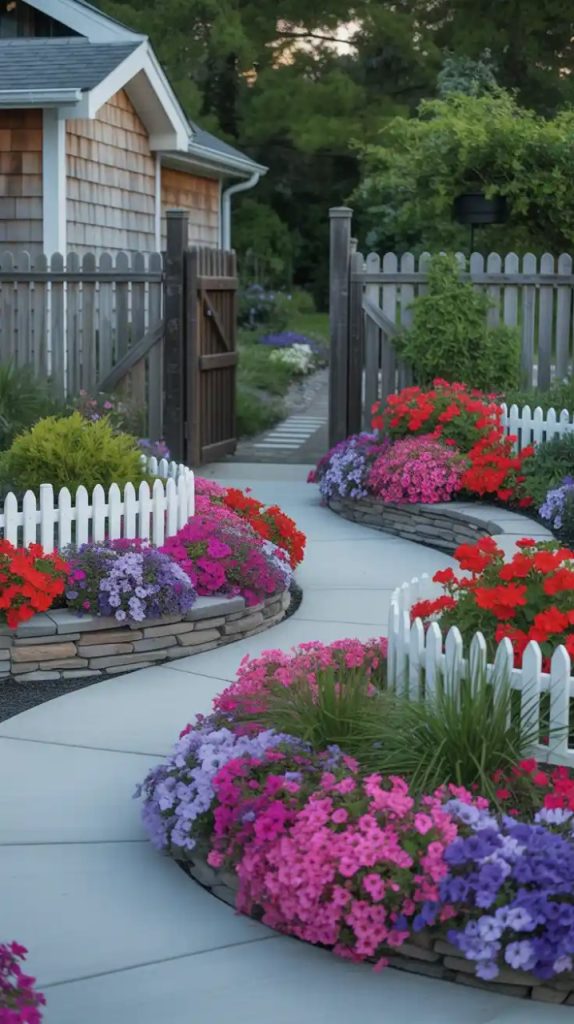
This creates a rustic, Mediterranean-inspired border that looks charming and unique.
8. Concrete Borders
Concrete is versatile, long-lasting, and surprisingly affordable. You can either pour your own custom shapes or use store-bought concrete blocks.
Creative ways to use concrete:
- Make molds in different shapes for decorative edges.
- Paint or stain concrete for a modern touch.
- Use large blocks for raised garden beds.
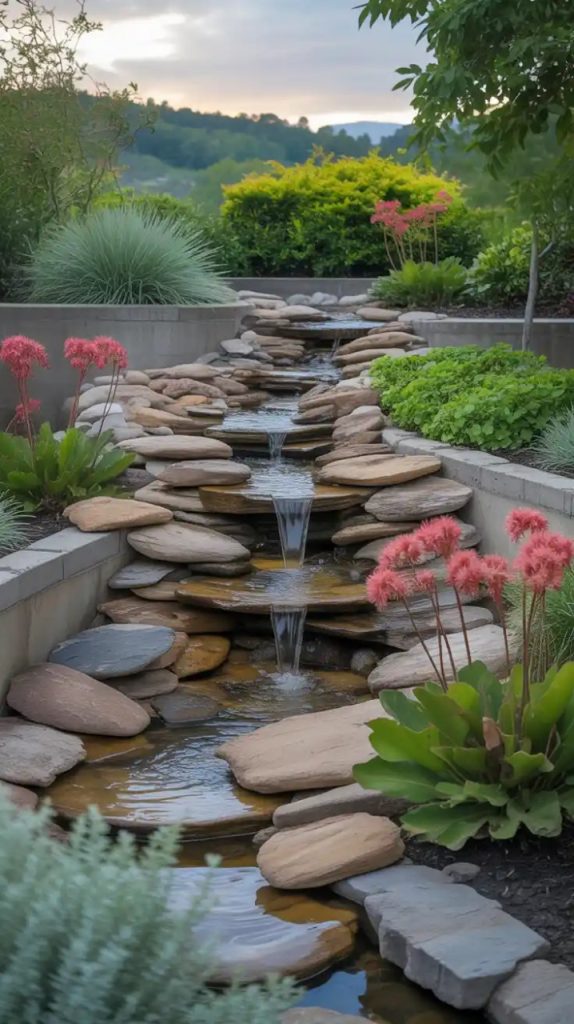
Durability: Concrete borders last for decades with little maintenance.
9. Recycled Bottle Edging
Glass and plastic bottles can be repurposed into colorful garden edging.
How to do it:
- Dig a trench along the garden edge.
- Place bottles neck-down side by side.
- Mix clear and colored bottles for a fun effect.
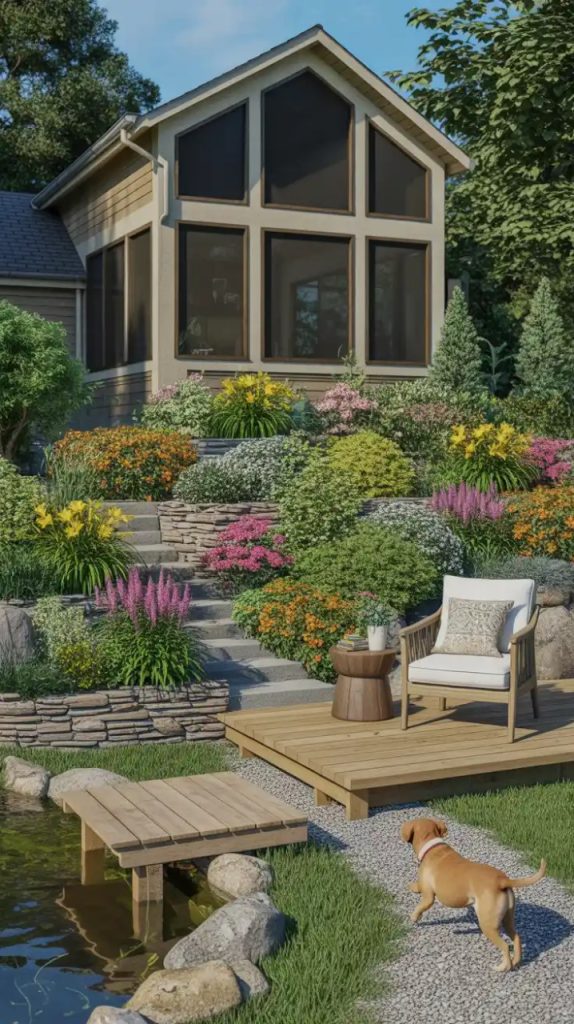
This not only saves money but also reduces waste, making it an eco-friendly project.
10. Metal Sheet Edging
Recycled sheet metal or corrugated iron can give your garden a sleek, industrial look.
Why it’s great:
- Strong and long-lasting.
- Thin, so it doesn’t take up much space.
- Works well for modern landscapes.
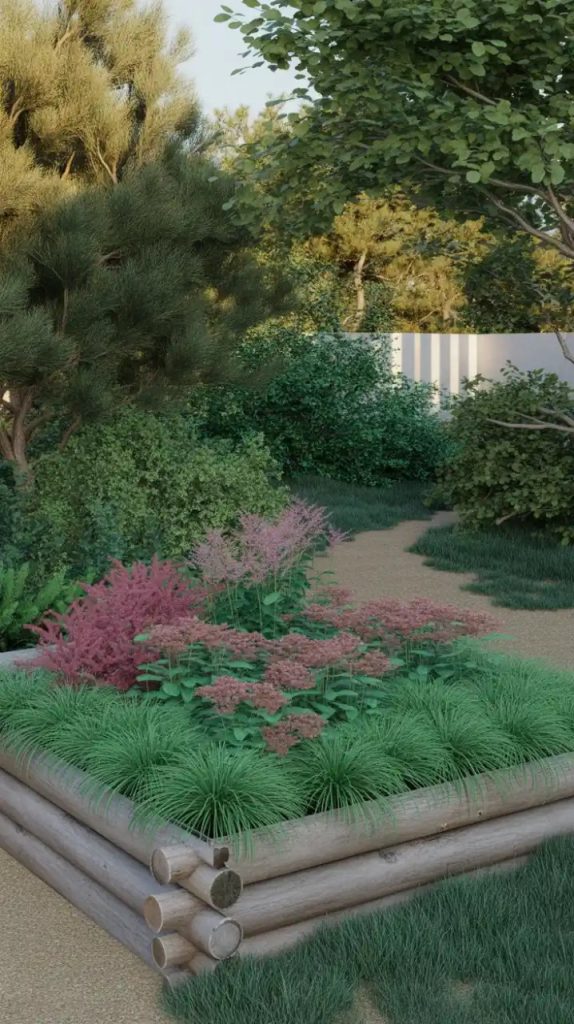
Tip: Sand sharp edges for safety before installation. Work-from-home spaces can stay stylish with these cozy bedroom office combo ideas.
11. Mulch Borders
If you prefer natural and low-maintenance edging, mulch works well. Simply dig a trench and fill it with bark mulch to define the edge.
Advantages:
- Inexpensive and widely available.
- Prevents weeds.
- Blends naturally with the garden environment.
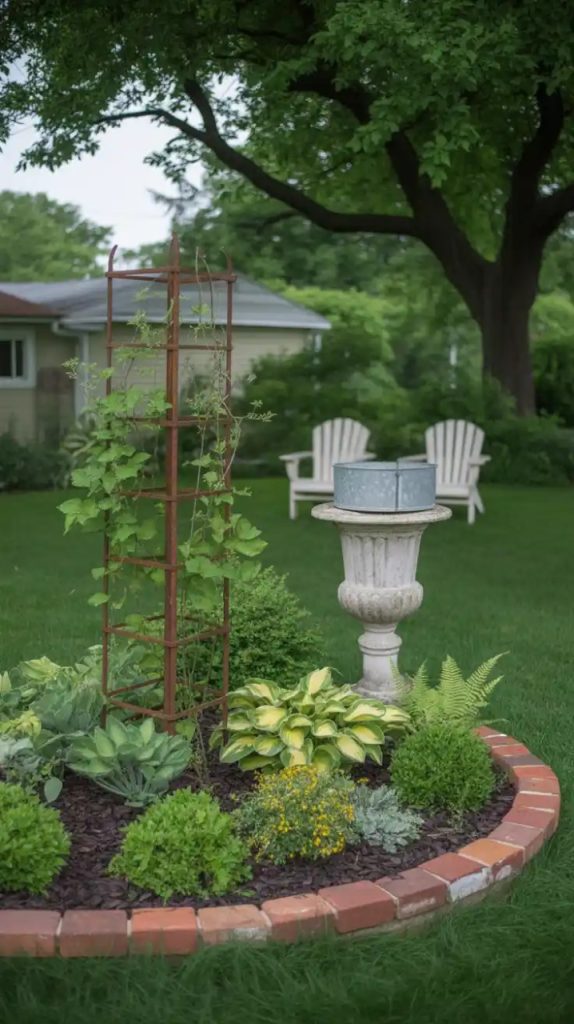
The only downside: It needs to be refreshed every season.
12. Rope or Twine Borders
For small gardens, rope edging can add a charming, decorative touch.
DIY steps:
- Use thick nautical rope.
- Secure it with small wooden stakes.
- Create curves or straight lines as needed.
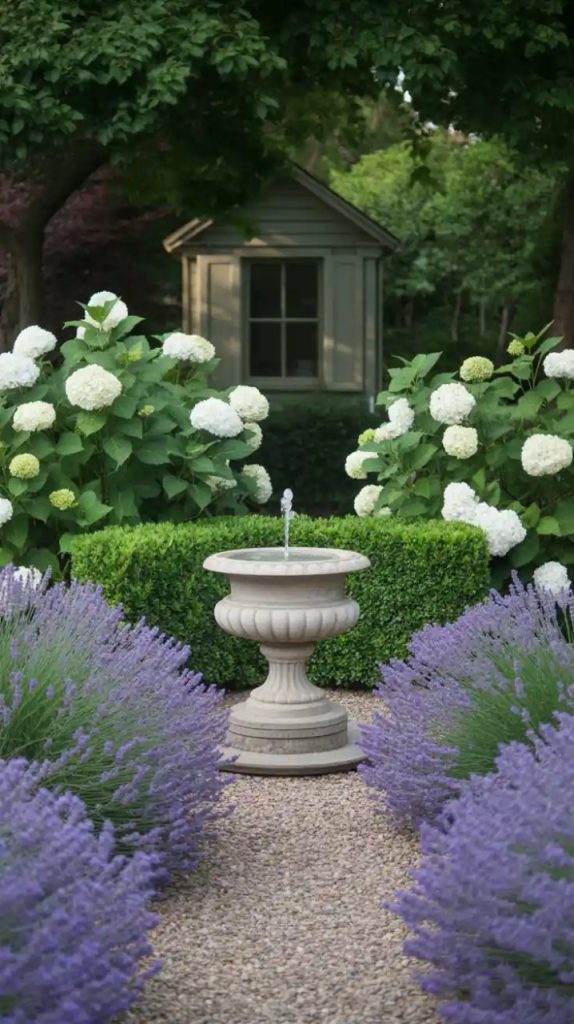
This style looks especially good in coastal or rustic-themed gardens.
13. Cinder Block Edging
Cinder blocks are practical, durable, and multifunctional.
Ideas for using them:
- Line them up as a solid border.
- Plant herbs or succulents inside the hollow sections.
- Paint them for a colorful, playful look.
Budget tip: You can often find old cinder blocks for free from demolition projects.
14. Bamboo Edging
Bamboo adds a natural, tropical vibe to the garden.
Ways to install bamboo edging:
- Cut bamboo poles into equal lengths.
- Tie them together with rope for a flexible border.
- Bury them halfway into the soil for stability.
It’s lightweight, eco-friendly, and great for Japanese or Zen-inspired gardens.
15. Upcycled Household Items
Almost anything can become edging if you get creative! Old plates, tiles, bicycle wheels, or even cutlery can be repurposed into fun garden borders.
Examples:
- Brightly painted plates half-buried in soil.
- Old roofing tiles arranged like scales.
- Recycled wheels for a quirky, eclectic look.
This option is perfect for DIYers who love to personalize their gardens with unique touches. Enhance your bedroom’s visual appeal with creative over the bed wall décor ideas.
How to Choose the Right DIY Garden Edging
With so many options, here are a few things to consider before starting your project:
- Budget – Some options, like mulch or logs are nearly free, while others, like stone or concrete, may cost more.
- Garden style – Match edging to your garden theme (rustic, modern, tropical, cottage).
- Durability – Wood may rot over time, while stone and concrete last longer.
- Ease of installation – Some edging materials require more tools or skills than others.
- Maintenance – Consider whether you’re okay with refreshing mulch or want a long-term solution like stone.
Extra Tips for Successful Garden Edging
- Dig a proper trench first for neatness and stability.
- Use landscape fabric under gravel or mulch to prevent weeds.
- Level your materials so the edging looks clean and professional.
- Combine edging with lighting for nighttime beauty.
- Seal wooden edges to prevent rot and extend lifespan.
Conclusion
Garden edging may seem like a small detail, but it has a big impact on how your outdoor space looks and functions. With these 15 cheap DIY garden edging ideas, you can transform your garden into a more polished, organized, and inviting space—without spending a fortune.
Whether you choose the rustic charm of logs, the durability of stone, the eco-friendliness of recycled bottles, or the creativity of upcycled items, there’s a perfect edging idea for every budget and style.
With a little time and creativity, your garden will not only look stunning but also be easier to maintain year after year.

